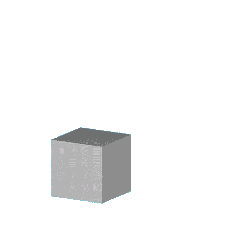Steven Strogatz had great series of tweets about math education earlier in the week. These two have stayed in my head since he posted them:


I know that last year Strogatz taught a college level course similar to the one he is describing in the tweets. We even used a couple of his tweets about the course material for some fun Family Math activities. For example:
Here’s a link to that set of projects:
Steven Strogatz’s circle-area exercise part 2 (with a link to part 1)
So, thinking back to projects like those got me thinking about all sorts of other ideas you could explore in an appreciation course. At first my ideas were confined to subjects that are traditionally part of pre-college math programs and were essentially just different ways to show some of the usual topics. Then I switched tracks and thought about how to share mathematical ideas that might not normally be part of a k-12 curriculum. Eventually I tried to see if I could come up with a (maybe) 3 week long exploration on a specific topic. I chose folding and thought about what sort of ideas could be shared with students.
Below are 9 ideas that came to mind along with 30 second videos showing the idea.
(1) A surprise book making idea shown to me by the mother of a friend of my older son:
(2) Exploring plane geometry through folding
We’ve done many explorations like this one in the last couple of years – folding is an incredibly fun (and surprisingly easy) way for kids to explore ideas in plane geometry without having to calculate:
Our Patty Paper geometry projects
Here’s one introductory example showing how to find the incenter of a triangle:
(3) The Fold and Cut theorem
Eric Demaine’s “fold and cut” theorem is an fantastic bit of advanced (and fairly recent) math to share with kids. Our projects exploring “fold and cut” ideas are here:
OUr Fold and Cut projects
Here’s one fun fold and cut example:
(4) Exploring platonic solids with Laura Taalman’s 3d printed polyhedra nets
You can find Taalman’s post about these hinged polyhedra here:
Laura Taalman’s hinged polyhedra blog post on her Makerhome blog
And if you like the hinged polyhedra, here’s a gif of a dodecahedron folding into a cube!

Which comes from this amazing blog post:
The Golden Section, The Golden Triangle, The Regular Pentagon and the Pentagram, The Dodecahedron
[space filled in with random words to get the formatting in the blog post right 🙂 ]
(5) An amazing cube dissection made by Paula Beardell Krieg
We’ve also done some fun projects with shapes that I wouldn’t have thought to have explored with folded paper. Paula Beardell Krieg’s work with these shapes has been super fun to play with:
Our projects based on Paula Beardell Krieg’s work
(6) And Paula didn’t just stop with one cube 🙂
(7) Two more of Laura Taalman’s prints
Seemingly simple ideas about folding and bending can lead to pretty fantastic mathematical objects! These objects are another great reminder of how 3d printing can be used to make mathematical ideas accessible.
Here’s Taalman’s blog post about the Peano curve:
Laura Taalman’s peano curve 3d print
(8) Getting to some more advanced work from Erik Demaine and Joseph O’Rourke
As hinted at early with the Fold and Cut theorem, some of the mathematical ideas in folding can be extremely deep:
(9) Current research by Laura DeMarco and Kathryn Lindsey
Finally, the Quanta Magazine article linked below references current research involving folding ideas. The article also provides several ways to share the ideas with students.
Quanta Magazine’s article on DeMarco and Lindsey’s work
The two blog posts below show my attempt to understand some of the ideas in the article and share them with kids. The video shows some of the shapes we made while studying the article.
Trying to understand the DeMarco and Lindsey 3d folded fractals
Sharing Laura DeMarco’s and Kathryn Lindsey’s 3d Folded Fractals with kids
So, these are just sort of ideas that popped into my head thinking about one part of a math explorations class. Feels like you could spend three weeks on folding and expose kids to lots of fun ideas that they’d (likely) never seen before.

















